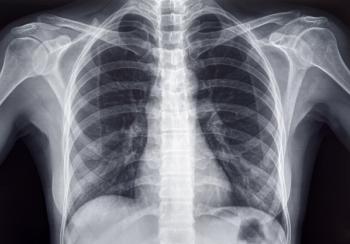
AI Model Predicts Immunotherapy Response in Advanced Lung Cancer Patients
A study published in
Immune checkpoint inhibitors (ICIs) are a class of immunotherapy drugs that help the immune system recognize and attack cancer cells. These therapies have shown clinical benefit for patients with advanced NSCLC, particularly for those without EGFR or ALK gene mutations. The catch is that only about
Identifying the patients most likely to benefit from ICIs has been challenging, with biomarkers like PD-L1 status providing some guidance but not perfect predictive power. Now, though, researchers are using AI to develop models that more reliably identify which patients may benefit most.
"Pathology samples are essential for cancer diagnostics and management," first author
Rakaee and his colleagues focused on developing a deep learning model that analyzes digital pathology images to predict the likelihood of a patient responding to ICIs. Using slide images of stained tissue samples, the model was tested on a cohort of 958 patients from the U.S. and Europe who were treated with ICIs. The model looked at over 295,000 images from pathology samples.
The team found that the model's predictions were significantly associated with better clinical outcomes, including progression-free survival and overall survival. It showed a prediction score (area under the curve, or AUC) of 0.75 for how well patients would respond to treatment in the internal test set. In the validation cohort, the model achieved a prediction score of 0.66. When combined with PD-L1 scores, the model's prediction score improved to 0.70, outperforming PD-L1 alone, which had a response rate of 41%. The combined approach showed a 51% response rate in the validation cohort.
Notably, combining the deep learning model's predictions with traditional biomarkers like PD-L1 significantly improved patient stratification, allowing for more precise response prediction.
While these results show strong predictive power, the researchers pointed out some limitations. Data on PD-L1 and tumor mutational burden (TMB) were not always available for every sample. Also, the model required a pathologist to assess certain areas, which could limit its scalability. Still, these findings may lead to a future role for a deep learning model, alongside PD-L1 testing, to help clinicians and patients make more informed treatment decisions for advanced NSCLC.
"Note that the clinical translation of such models will require further validation through multiinstitutional prospective studies," Rakaee says.
Newsletter
Get the latest industry news, event updates, and more from Managed healthcare Executive.

















































